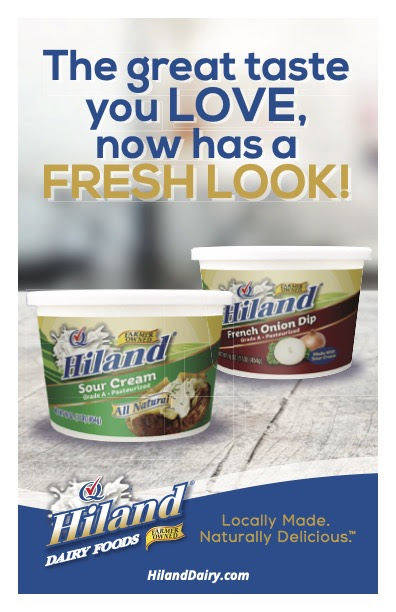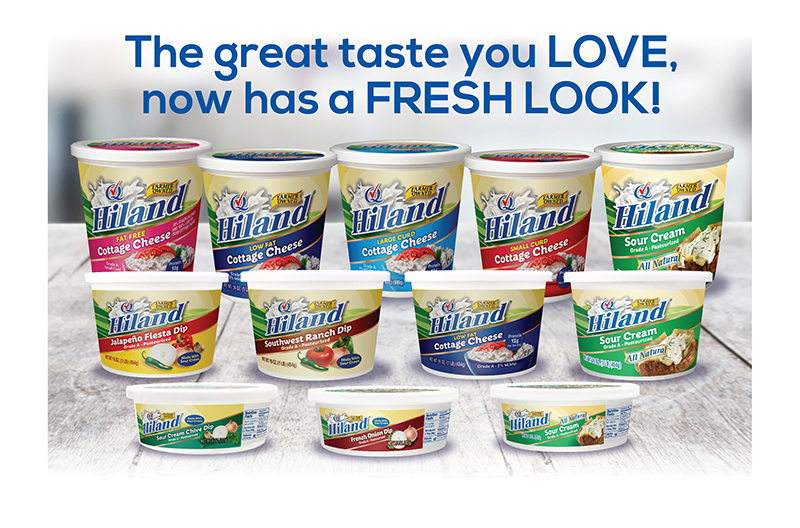Hiland Dairy recently unveiled new packaging with colorful, high-quality graphics for its cultured products, including cottage cheese, sour cream and dips.
Launched in December, the packaging will begin appearing soon on store shelves. Shoppers will note the farmer-owned ribbon now sits atop the Hiland logo, set against the backdrop of the rolling green hills of a dairy farm.

Hiland’s new cultured line packaging uses In-Mold Label technology from Winpak, a manufacturer of packaging materials and machines. The technology allows printing more photographic-quality images and graphics to differentiate from other brands and product offerings. In the past, most packaging was limited to more basic designs.
“Consumers want products in packages that look as good on the outside as they taste on the inside,” said Sarah Carey, marketing manager. “This new printing technology allows Hiland Dairy to represent our brand in a more modern, beautiful way.”
The In-Mold Label technology, or IML, also cuts waste, reduces labor costs and promotes recycling. IML technology aligns with Hiland’s commitment to a circular economy where packaging material is recycled or reused.
The barrier packaging also includes UV light and oxygen barriers to ensure freshness and extend shelf life.
“We are excited about our new packages and believe they represent our farmer-owned brand well,” Carey said. “Our commitment to sustainability extends to our packaging with this innovation from Winpak that can reduce waste and promote recycling.”
About Hiland Dairy Foods
A farmer-owned dairy foods company, Hiland Dairy is headquartered in Springfield, Missouri. Its products include milk, dips, cottage cheese, sour cream, yogurt, ice cream, butter, cheese and eggnog.
In addition, Hiland produces and distributes various other beverages, such as Red Diamond Tea, lemonade and fresh juices.
Hiland employs 4,000 people throughout Arkansas, Iowa, Kansas, Louisiana, Missouri, Nebraska, Oklahoma, Tennessee and Texas. Hiland’s milk comes from its farmers-owners just miles from their processing plants, where it goes from farm to shelf within 48 hours.
Read more packaging news from The Shelby Report.

